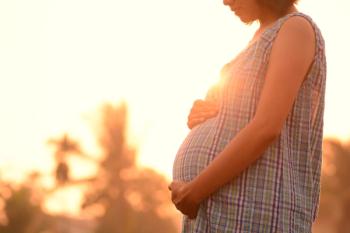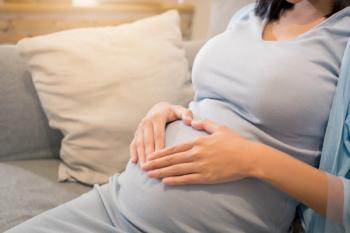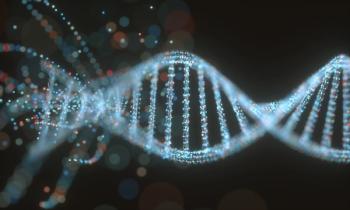
Presumptive limb-body wall complex detected by ultrasonography
Limb-body wall complex refers to a rare combination of disruptive and lethal abnormalities which start early in the gestational process. Abnormalities commonly associated with this disorder include cranio-facial abnormalities, scoliosis, ventral body wall defect (thoraco-abdominoschisis), limb deformations, short umbilical cord, and others.
Author's Introduction:
Limb-body wall complex refers to a rare combination of disruptive and lethal abnormalities which start early in the gestational process. Abnormalities commonly associated with this disorder include cranio-facial abnormalities, scoliosis, ventral body wall defect (thoraco-abdominoschisis), limb deformations, short umbilical cord, and others. Other terms used to describe similar findings include short umbilical cord syndrome, body-stalk anomaly, and amniotic band syndrome. The causes of this disorder are not fully understood.
Although limb-body wall complex has been widely reported in the literature, the case that follows had several unusual features. First of all, it involved a twin pregnancy. Secondly, the abnormal twin (referred to as "twin B") progressed from oligohydramnios in early pregnancy to polyhydramnios. This complication resulted in severe compression of the sac of the normal twin (referred to as "twin A"), and a therapeutic amniocentesis was consequently performed. Twin A continued to develop normally, whereas twin B developed oligohydramnios once again, and subsequently died. As of this writing, the mother's pregnancy with twin A continues, and this surviving twin is progressing normally. Please review the following case and accompanying images.
It is my hope that this case will stimulate lively discussion and healthy debate. It will give all of us an opportunity to learn something new about these rare disorders.
-- Martin Necas, RDMS, RVTHistory:
A 39-year-old female presented to a local diagnostic center for an obstetrical dating scan prior to undergoing elective termination of her pregnancy. A living twin gestation of 12 weeks was identified with one twin suffering unspecified fetal abnormalities. The patient decided against termination of her pregnancy and was subsequently referred to our department for further ultrasonographic evaluation
Findings:
The first obstetrical ultrasound was performed at 15 weeks, with the following findings:
- Living dichorionic twin pregnancy
- Twin A: LT lateral location, average ultrasound age 14w5d, posterior placenta
- Abnormalities: Echogenic Intracardiac Focus (a.k.a. echogenic chordae tendinae), no other anatomic abnormality detected
- Twin B: RT lateral location, average ultrasound age 13w3d, anterior placenta
- Abnormalities: ventral body defect (thoraco-abdominoschisis), 90-degree lateral scoliosis of the lumbar spine, highly prominent nuchal region, ectopia cordis, two vessel cord, oligohydramnios.
Image:
The patient refused genetic amniocentesis, and received, at 18 weeks, a detailed anatomy scan. The previously described abnormalities were again identified and confirmed by this ultrasound. Twin A demonstrated appropriate growth, yet twin B was small for GA and demonstrated multiple severe malformations. The body was severely contorted due to a 90-degree scoliosis.
Image:
Image:
In addition, there was a pronounced thickening of the nuchal region, and a massive ventral-body defect involving the chest and the abdomen.
Image:
The fetal heart seemed in an ectopic location, as it was closely associated with bulging abdominal contents.
Image:
The intra abdominal anatomy was in apparent disarray. While the fetal stomach and urinary bladder were readily visualized, the exact location and character of the remaining anatomy (i.e., kidneys, liver, bowel) could not be established.
The appearance of this ventral-body defect seemed consistent with a thoraco-abdominoschisis (i.e., a massive ventral-body defect where the lack of an anterior wall allows the organs to protrude through).
Image:
The umbilical cord was visualized with 2D and color imaging. It contained only a single umbilical artery and its character appeared to be straight and uncoiled.
Image:
The intracranial anatomy was grossly normal. The upper and lower extremities were examined and appeared properly formed. The lower extremities were slightly foreshortened probably secondary to poor overall growth for the fetus. The amount of amniotic fluid for twin B had increased significantly since the last ultrasound, making a future generic amniocentesis possible.
The pregnancy was followed, and good overall development of twin A was noted.
Image:
Image:
Image:
By comparison, twin B exhibited poor growth with rising AFIs. By twenty-seven weeks, the polyhydramnios of twin B appeared to produce significant compression on twin A's sac. A therapeutic amniocentesis was therefore performed at approximately 28 weeks GA. Fetal growth of twin B continued to diminish. By 31 weeks GA, all of its measurable body parameters (BPD, HC, FL) lagged in development by more than 5 weeks. The amniotic fluid did not re-accumulate, but remained relatively low. The umbilical cord Doppler at 31 weeks demonstrated marked diastolic reversal.
Image:
The fetus died at approximately 32 weeks GA. As already mentioned, the surviving twin A is exhibiting appropriate growth for gestational age, as confirmed by an ultrasound of 1-15-98 at 34.5 weeks GA.
Conclusion:
I believe the combination of lethal abnormalities in this case may represent limb-body wall complex. However, other diagnostic possibilities may also include pentalogy of Cantrell, and severe chromosomal abnormality.
Author's acknowledgment: Special thanks to my colleagues Karen Robertson, DMU and Donna Smith, DMU for their indispensable assistance in locating all necessary medical records.
Editor's note: the author may be reached at:
Martin Necas, RDMS, RVT, P.O.Box 19319, Hamilton Central, Hamilton, New Zealand, Telephone (home): New Zealand + (07) 855-9016, Telephone (work): New Zealand + (07) 839-8826, FAX (work): New Zealand + (07) 839-8893
e-mail (home):
e-mail (work): NecasM@HWL.Co.NZ
Click on the above image to view full size
Click on the above image to view full size
Click on the above image to view full size
Click on the above image to view full size
Click on the above image to view full size
Click on the above image to view full size
Click on the above image to view full size
Click on the above image to view full size
Click on the above image to view full size
Click on the above image to view full size
Click on the above image to view full size
References:
© 1998. All rights reserved.
Reproduction of this material in any form is forbidden withoutthe express written consent of Elecomm Corporation & OBGYN.net.
Newsletter
Get the latest clinical updates, case studies, and expert commentary in obstetric and gynecologic care. Sign up now to stay informed.









